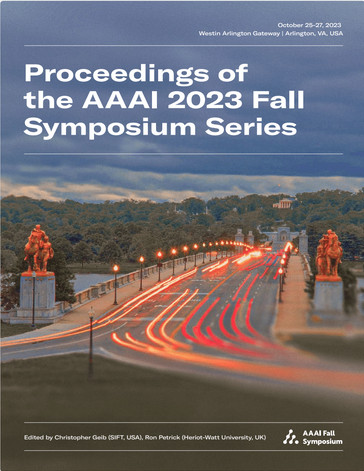A Categorical Representation Language and Computational System for Knowledge-Based Robotic Task Planning
DOI:
https://doi.org/10.1609/aaaiss.v2i1.27718Keywords:
Task Frame Formalism, Robot Programming, Language GroundingAbstract
Classical planning representation languages based on first-order logic have preliminarily been used to model and solve robotic task planning problems. Wider adoption of these representation languages, however, is hindered by the limitations present when managing implicit world changes with concise action models. To address this problem, we propose an alternative approach to representing and managing updates to world states during planning. Based on the category-theoretic concepts of C-sets and double-pushout rewriting (DPO), our proposed representation can effectively handle structured knowledge about world states that support domain abstractions at all levels. It formalizes the semantics of predicates according to a user-provided ontology and preserves the semantics when transitioning between world states. This method provides a formal semantics for using knowledge graphs and relational databases to model world states and updates in planning. In this paper, we conceptually compare our category-theoretic representation with the classical planning representation. We show that our proposed representation has advantages over the classical representation in terms of handling implicit preconditions and effects, and provides a more structured framework in which to model and solve planning problems.Downloads
Published
2024-01-22
Issue
Section
Unifying Representations for Robot Application Development

